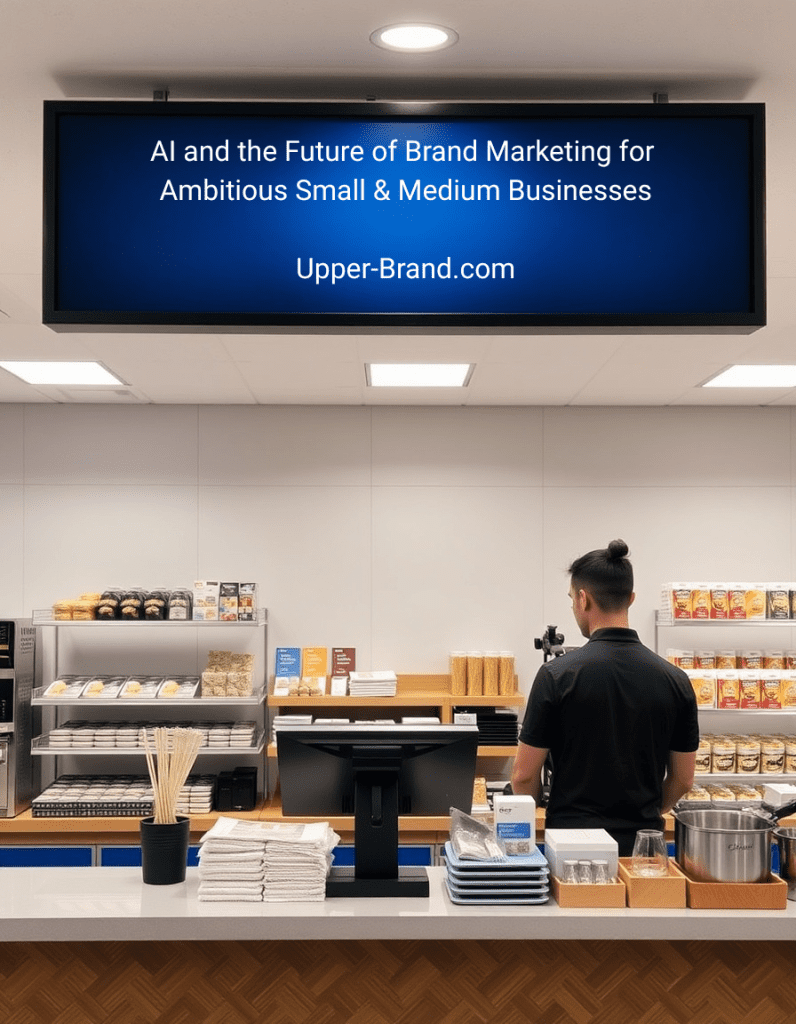You’re Streaming. You’re Shopping. And the Ads Know It.

Introduction: Screens as Storefronts
Imagine a world where your living room television doubles as a curated boutique and your favorite binge-watch becomes the digital aisle that nudges you toward checkout. That world is already here. Retail titans like Amazon and streaming heavyweights such as Netflix and Disney Plus are fusing entertainment with commerce, turning every pause button, playlist, and product search into prime advertising real estate. For forward-thinking brand leaders, this convergence redraws the map of consumer engagement. For consumers, it rewrites the rhythm of discovery and purchase.
In this deep dive, we decode how connected TV, retail media networks, and first-party data are reshaping marketing strategy. We spotlight the trends you cannot afford to ignore, the metrics that matter, and the visionary moves that will keep your brand on the crest of this wave.
The Rise of the Seamless Shopper
A seamless shopper glides effortlessly from couch to cart. She spots an outfit on a drama series, clicks a remote, and the item appears in her Amazon wish list. He pauses a cooking show and receives an instant coupon for the featured blender. These friction-free connections rely on three converging forces:
- Data-rich identity graphs that link viewing habits to purchase history.
- Programmatic ad exchanges that auction micro-moments in milliseconds.
- Shoppable overlays that transform passive impressions into active conversions.
According to Insider Intelligence, more than 80 percent of North American households now stream video on connected devices, and over half shop on Amazon at least once a month. The overlap is marketing gold. Brands can reach consumers in high-attention states, then escort them directly to the digital shelf without a single extra click.
Connected TV Becomes a Commerce Channel
Connected TV (CTV) once threatened to crush advertising with its promise of subscription-based, ad-free bliss. Instead, rising content costs and subscription fatigue ushered in a new reality: ad-supported tiers that blend premium viewing with finely targeted spots. Viewers accept the trade-off for lower fees. Marketers gain a portal into the biggest screen in the house.
Key shifts powering CTV commerce:
- Addressable storytelling: Ads can swap creative mid-flight based on region, time of day, or household demographics.
- Dynamic product feeds: Price, inventory, or color options update in real time, reflecting live data from an ecommerce catalog.
- Voice and remote integration: Smart-TV peripherals allow viewers to save items, request details, or complete purchases without leaving the show.
The result is a virtuous loop: CTV drives awareness and inspiration, while built-in shopping tools capture intent before it fades. Brands that master this sequence see lower cost per acquisition and higher repeat purchase rates thanks to the halo effect of entertainment-driven discovery.
Retail Media Networks Redefine Search
Retail media networks (RMNs) transform marketplaces into high-yield advertising engines. When consumers search for “organic dog food” on Amazon or Walmart.com, the first rows of results are paid placements fueled by sophisticated bidding algorithms. Sponsored product listings capture intent at its hottest point—right before the add-to-cart click—while branded “stores” showcase complementary items and drive deeper basket value.
Three advantages push RMNs to the top of modern media plans:
- First-party precision: Retailers own the end-to-end purchase path, from search query to transaction. That closed loop generates unmatched signal quality for targeting and measurement.
- Lower barriers: Self-service dashboards democratize ad buying, letting startups compete against heritage giants on a level playing field—if they wield data wisely.
- Instant attribution: Sales lift can be tracked down to SKU level, enabling agile budget shifts toward the highest-converting keywords or audiences.
Expect RMN spend to climb steeply through 2026 as brands reallocate dollars away from traditional display ads that struggle to prove incremental impact.
Data Is the New Context
The magic behind streaming-shopper synergies is not only where ads appear but when. Machine-learning engines now map lifestyle rhythms so precisely that placement resembles choreography.
- Morning commute: Smartphone users scrolling news apps receive caffeine and breakfast-on-the-go offers.
- Late-night browse: Fitness gear pops up after hours, targeting aspirational purchase mindsets in quiet reflective moments.
- Weekend binge: Home improvement ads surge during long-form reality shows, nudging viewers toward DIY projects while energy is high.
Contextual alignment amplifies relevance, boosts click-through, and shortens conversion timelines. Brands must think in moments, not just segments. The question is no longer “Who is our audience?” but “What are they feeling right now, and how can our product fit that pulse?”
Five Trends Visionaries Need on the Radar
- Shoppable content everywhere
Interactive overlay technology will move beyond CTV into live-sports feeds, social streams, and even augmented-reality lenses. Prepare creative libraries that can pivot seamlessly across formats. - Algorithmic price transparency
Dynamic pricing will adapt offers based on demand, inventory, and consumer loyalty status. Tailor messaging to highlight real-time deals before the algorithm recalculates. - Sensor-driven hyper-local triggers
Brick-and-mortar retailers will push geo-fenced notifications tied to local weather or foot traffic. Umbrellas on rainy days, sunscreen in sudden heat waves—automation with undeniable logic. - Post-purchase nurture loops
RMNs will integrate recommendation widgets on order-tracking pages, turning delivery anticipation into cross-sell opportunities. Build lifecycle content that thanks, educates, and upsells in a single flow. - Privacy-centric differentiation
Consumers weary of over-tracking will flock to brands that offer transparent controls and value-exchange perks. Loyalty programs with clear data perks will outshine those that hoard insights in black boxes.
Action Steps for Marketing-Forward Brands
- Audit data maturity
Map existing first-party data assets and identify gaps. Integrate CRM, web analytics, and point-of-sale feeds into a unified customer profile. - Invest in creative agility
Develop modular assets that can be recombined into dozens of variants. Quick-swap headlines, colors, or calls to action to maintain freshness across high-frequency environments. - Pilot CTV commerce tests
Start with a limited budget on an ad-supported tier. Pair emotional storytelling with a frictionless path to purchase via QR or remote-click overlay. Measure uplift versus control regions and iterate fast. - Optimize retail media spend
Use keyword clustering and negative match lists to avoid cannibalizing organic rank. Layer demographic filters with basket-level analytics to expose hidden conversion gems. - Champion transparent consent
Offer granular opt-ins, clear data usage explanations, and instant preference centers. Privacy is not a blocker but a differentiator when handled with integrity.
Conclusion: Designing for the Screen Economy
The fusion of streaming entertainment and ecommerce is rewriting the consumer journey. Ads no longer lurk on the periphery; they sit inside our favorite shows, social feeds, and checkout lanes, ready to translate fleeting curiosity into definite purchase. For visionary marketers, the task is equal parts art and algorithm. It means reading cultural signals before they mainstream, designing media plans that ride the momentum, and marrying imaginative storytelling with surgical measurement.
Your roadmap is clear: tap the power of connected TV, retail media, and moment-aware data models to deliver brand messages that feel timed by intuition yet backed by analytics. Own the context, respect privacy, and stay nimble. Because in the screen economy, attention is currency, and the brands that spend it wisely will define the next era of growth.










